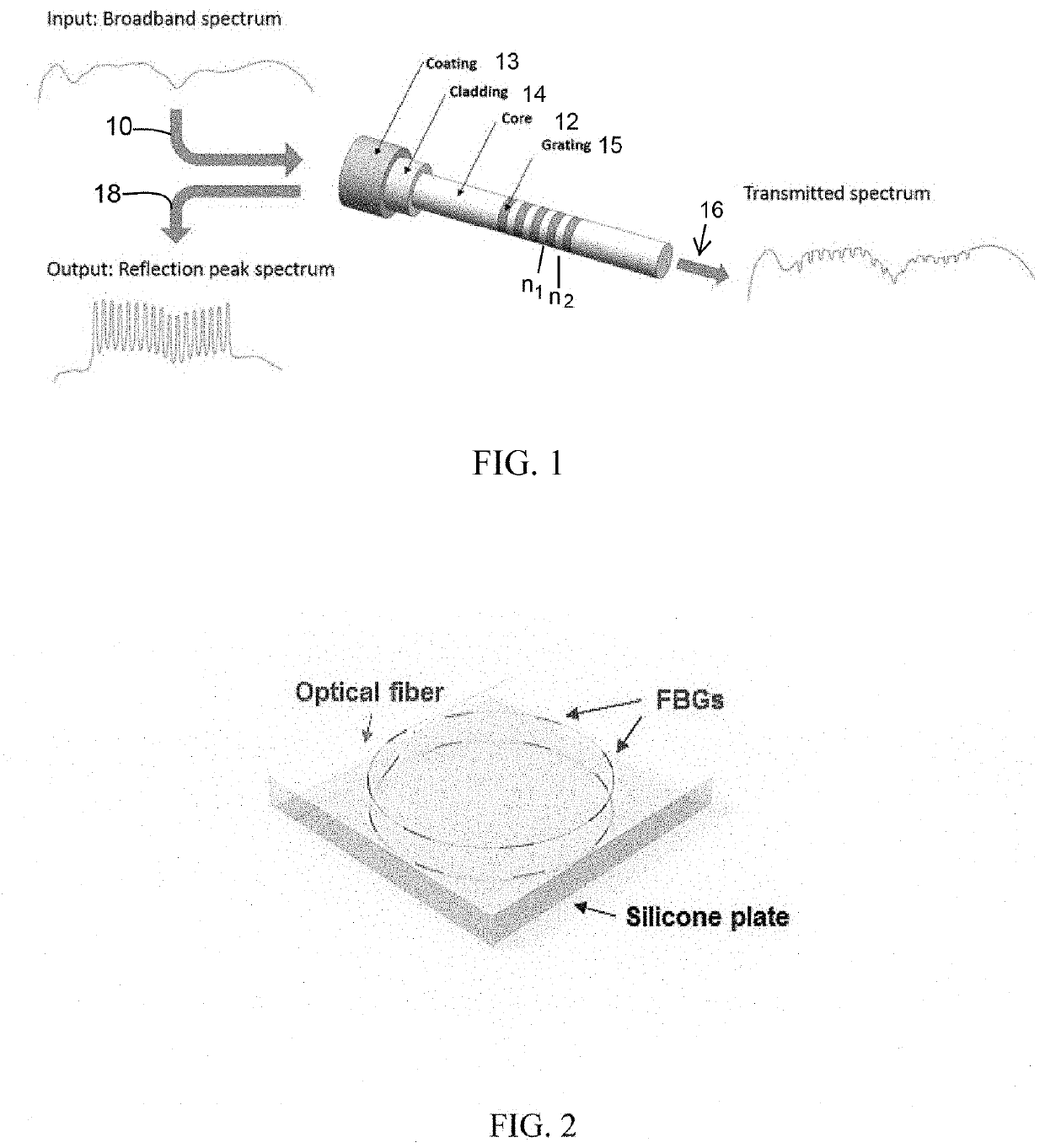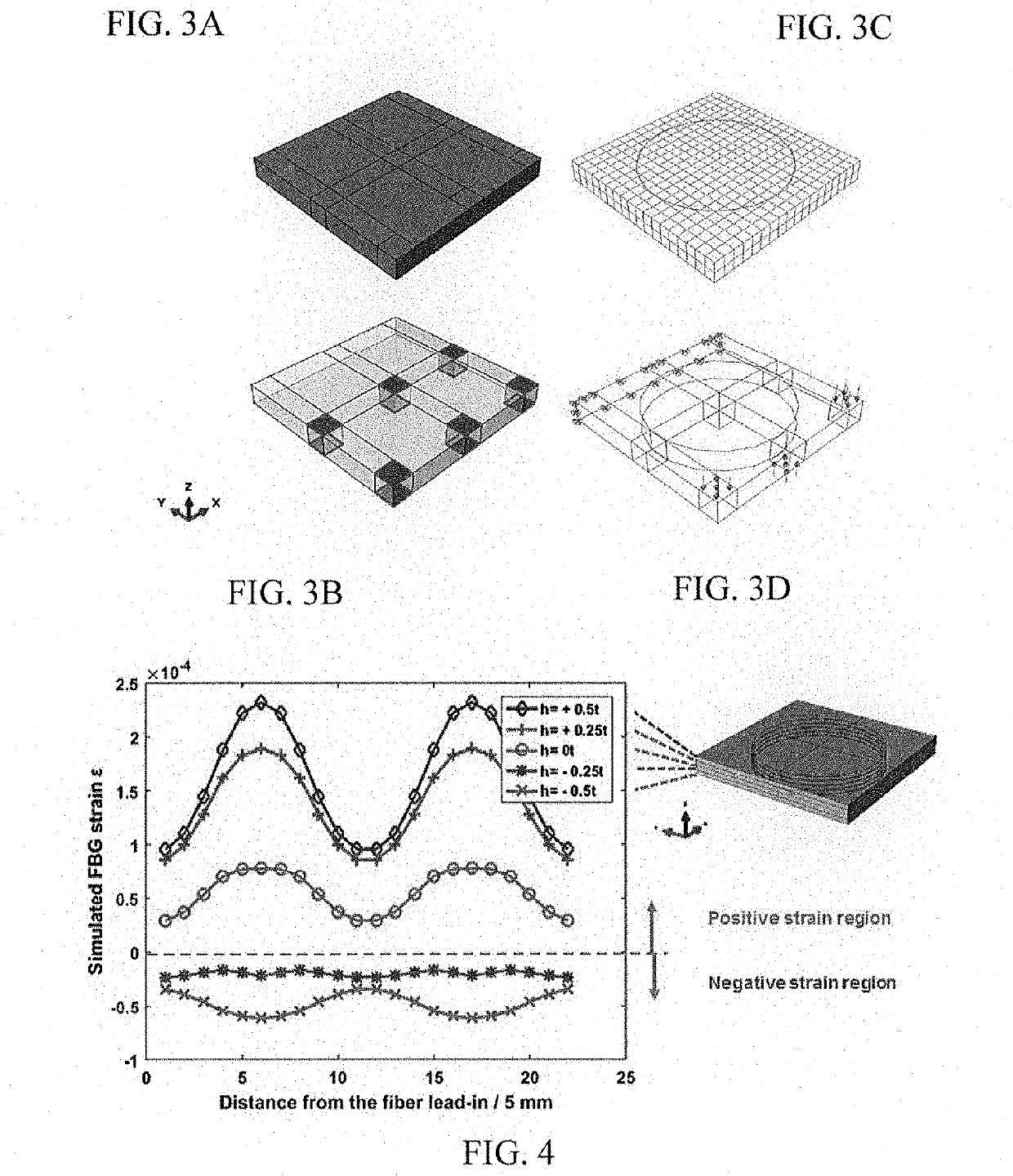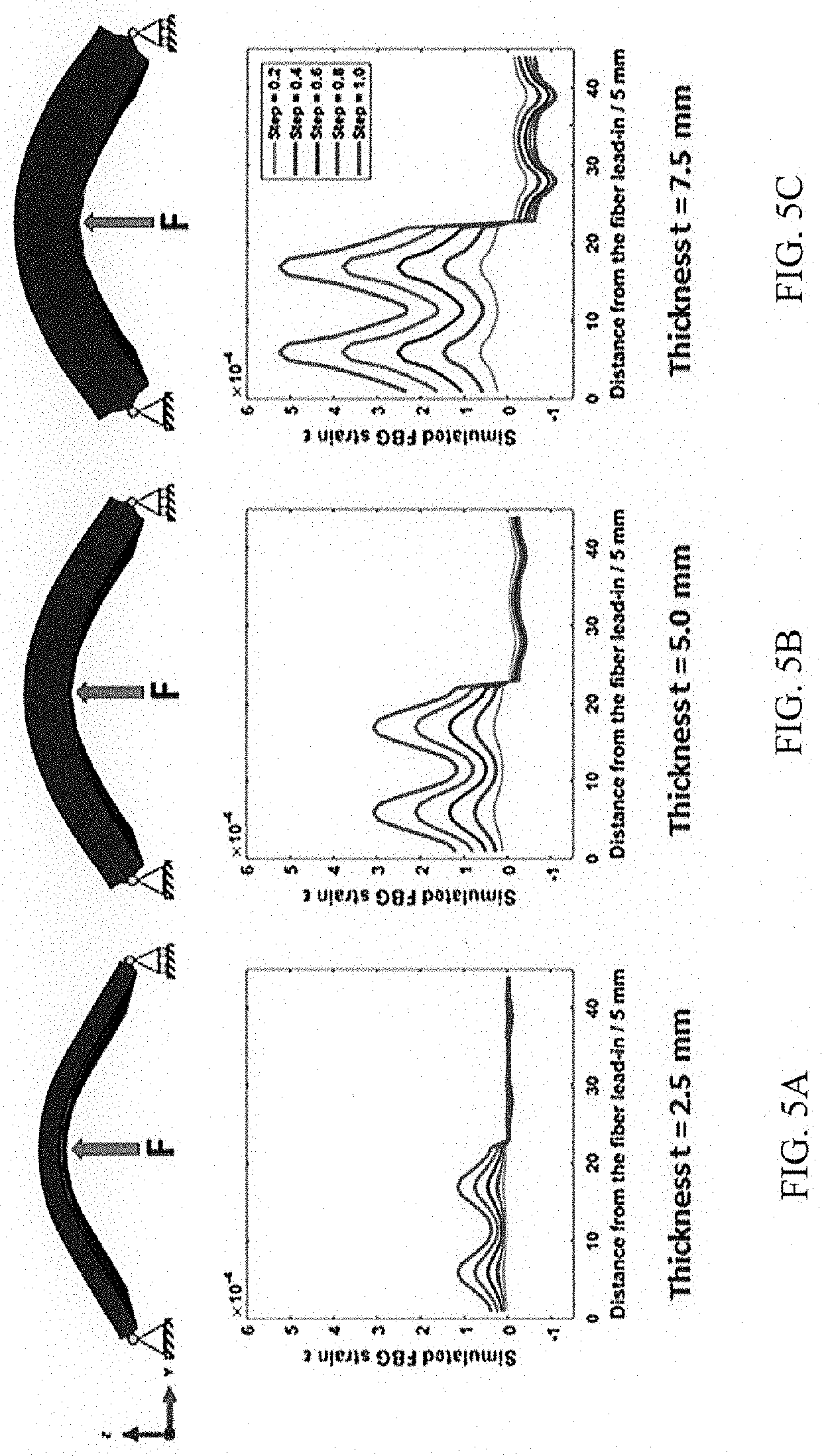Real-time surface shape sensing for flexible structures
- Summary
- Abstract
- Description
- Claims
- Application Information
AI Technical Summary
Benefits of technology
Problems solved by technology
Method used
Image
Examples
Embodiment Construction
[0041]The present invention utilizes a single optical fiber with sparsely distributed fiber-Bragg gratings (FBGs) embedded in a silicone rubber sheet. The FBGs can capture the mechanical strain in the top and bottom surfaces of the sensor, and the strain data is used to reconstruct the overall sensor surface morphology. Since the sensor may be placed on the surface of an object, it can also reconstruct the surface morphology of the object. According to the invention, one single-core optical fiber is coiled within the silicone substrate such that it forms two layers. This ensures unique optical signals are associated with a particular sensor bending configuration.
[0042]FGBs are selected as the sensing element in the system of the present invention because they are easy to fabricate and assemble. In addition, FBGs have excellent electromagnetic and corrosion immunity, and can provide a high density of sensors on a single fiber.
[0043]FBGs have a high multiplexing capability so they are...
PUM
 Login to View More
Login to View More Abstract
Description
Claims
Application Information
 Login to View More
Login to View More - R&D
- Intellectual Property
- Life Sciences
- Materials
- Tech Scout
- Unparalleled Data Quality
- Higher Quality Content
- 60% Fewer Hallucinations
Browse by: Latest US Patents, China's latest patents, Technical Efficacy Thesaurus, Application Domain, Technology Topic, Popular Technical Reports.
© 2025 PatSnap. All rights reserved.Legal|Privacy policy|Modern Slavery Act Transparency Statement|Sitemap|About US| Contact US: help@patsnap.com



